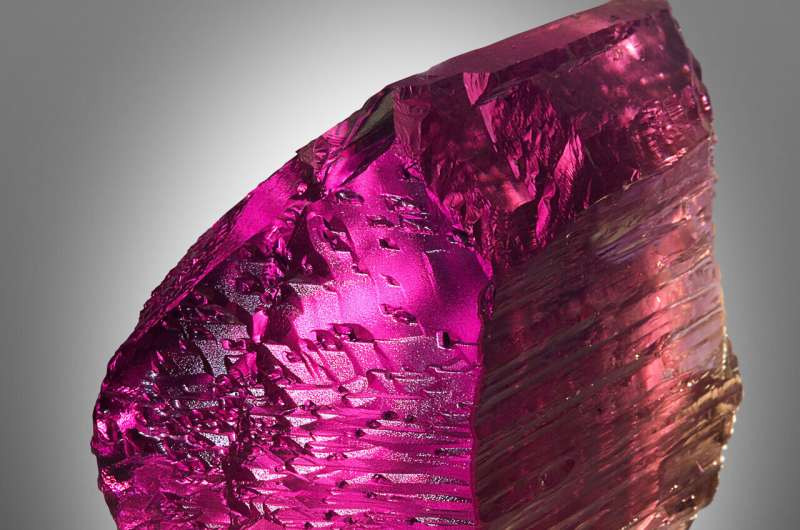Using AI to find rare minerals
A machine learning model can predict the locations of minerals on Earth—and potentially other planets—by taking advantage of patterns in mineral associations. Science and industry seek mineral deposits to both better understand the history of our planet and to extract for use in technologies like rechargeable batteries.
Shaunna Morrison, Anirudh Prabhu, and colleagues sought to create a tool for finding occurrences of specific minerals, a task that has long been as much an art as a science, relying on individual experience, along with a healthy dose of luck.
The team created a machine learning model that uses data from the Mineral Evolution Database, which includes 295,583 mineral localities of 5,478 mineral species, to predict previously unknown mineral occurrences based on association rules. The authors tested their model by exploring the Tecopa basin in the Mojave Desert, a well-known Mars analog environment.
The model was also able to predict the locations of geologically important minerals, including uraninite alteration, rutherfordine, andersonite, and schröckingerite, bayleyite and zippeite.
In addition, the model located promising areas for critical rare earth element and lithium minerals, including monazite-(Ce), and allanite-(Ce), and spodumene. Mineral association analysis can be a powerful predictive tool for mineralogists, petrologists, economic geologists, and planetary scientists, according to the authors.
The paper is published in the journal PNAS Nexus.
More information:
Shaunna M Morrison et al, Predicting new mineral occurrences and planetary analog environments via mineral association analysis, PNAS Nexus (2023). DOI: 10.1093/pnasnexus/pgad110
Citation:
Using AI to find rare minerals (2023, May 17)
retrieved 17 May 2023
from https://phys.org/news/2023-05-ai-rare-minerals.html
This document is subject to copyright. Apart from any fair dealing for the purpose of private study or research, no
part may be reproduced without the written permission. The content is provided for information purposes only.

A machine learning model can predict the locations of minerals on Earth—and potentially other planets—by taking advantage of patterns in mineral associations. Science and industry seek mineral deposits to both better understand the history of our planet and to extract for use in technologies like rechargeable batteries.
Shaunna Morrison, Anirudh Prabhu, and colleagues sought to create a tool for finding occurrences of specific minerals, a task that has long been as much an art as a science, relying on individual experience, along with a healthy dose of luck.
The team created a machine learning model that uses data from the Mineral Evolution Database, which includes 295,583 mineral localities of 5,478 mineral species, to predict previously unknown mineral occurrences based on association rules. The authors tested their model by exploring the Tecopa basin in the Mojave Desert, a well-known Mars analog environment.
The model was also able to predict the locations of geologically important minerals, including uraninite alteration, rutherfordine, andersonite, and schröckingerite, bayleyite and zippeite.
In addition, the model located promising areas for critical rare earth element and lithium minerals, including monazite-(Ce), and allanite-(Ce), and spodumene. Mineral association analysis can be a powerful predictive tool for mineralogists, petrologists, economic geologists, and planetary scientists, according to the authors.
The paper is published in the journal PNAS Nexus.
More information:
Shaunna M Morrison et al, Predicting new mineral occurrences and planetary analog environments via mineral association analysis, PNAS Nexus (2023). DOI: 10.1093/pnasnexus/pgad110
Citation:
Using AI to find rare minerals (2023, May 17)
retrieved 17 May 2023
from https://phys.org/news/2023-05-ai-rare-minerals.html
This document is subject to copyright. Apart from any fair dealing for the purpose of private study or research, no
part may be reproduced without the written permission. The content is provided for information purposes only.
